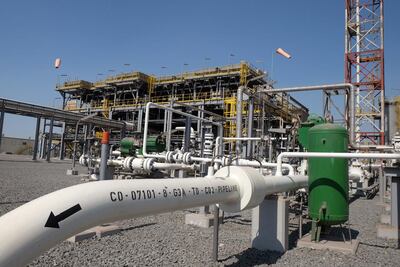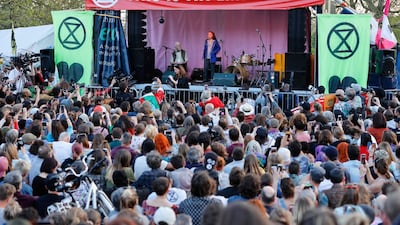Even as the young climate change activist Greta Thunberg addressed world leaders in Strasbourg last month on the need for urgent action, she was dismissed as naive. Critics claimed her tearful call for net-zero greenhouse gas emissions by 2025 was long on rhetoric and short on realism.
Certainly, few can doubt that nullifying the impact of around 40 billion tonnes of CO2 emitted each year so quickly will be challenging. Yet Thunberg insists it is possible – provided there exists the political will.
The size of the change required is certainly achievable. It’s a little-known fact that climate change policy in the UK has driven its CO2 emissions down to 19th century levels. Switching from coal to renewables and natural gas emissions has halved per capita emissions since their peak in 1970.
Critics argue that such change comes with a hefty price-tag. According to one estimate, the carbon taxes and renewable subsidies have cost the UK taxpayer £300 billion over the last decade.
Thunberg thinks it is a price worth paying – not least as the impact of climate change could be costlier still.
The real challenge of what she is demanding, however, is the timescale. And that is why she is right to focus on getting politicians on board. For history shows that the seemingly impossible can become a reality when key leaders unite behind policy.
The space race, the harnessing of atomic power and the elimination of smallpox were all the result of a political commitment to meet a challenge. In each case, it was the catalyst that turned small-scale advances into global solutions.
And it’s the same with climate change, where a host of breakthroughs await their chance to shine.
Among them are radically new ways to cut greenhouse gas levels. So-called carbon capture and storage (CCS) schemes have been around for decades, but most are small scale.
Abu Dhabi is home to one of the few large CCS plants in the world, where CO2 generated during steel-making at a plant in Mussaffah is compressed and then blasted into wells for oil extraction and storage.
But globally CCS technology has an image of being punitively expensive.
That’s now being challenged by a whole new approach being trialled at a fossil fuel power station in Texas. The NET Power plant uses natural gas to generate electricity – which immediately brings benefits over coal as it releases more energy per unit of carbon released.
But instead of then using pricey “scrubbing” technology to mop up the CO2, the NET Power plant puts the gas at the heart of a new, cleaner way of generating power.
Conventional power stations burn fossil fuels to turn water into steam, which then blasts through turbines, making them spin and generate electricity.
In the new plant, CO2 is pressurised, combined with water and the resulting mix used instead of pure steam. Once passed across the turbines, the water is recovered and the CO2 is either fed back in to be used again, or sent for storage. The result should be zero CO2 emission to the atmosphere, no net water consumption, and cheaper electricity – claims now being put to the test in Texas.

Meanwhile, biologists are looking recruit a natural ally in the fight against global warming: plants.
Through photosynthesis, these mop up around 750 billion tonnes of CO2 each year – around 20 times more than humans are pumping out. So even a modest increase in their CO2 absorption could help.
One obvious way to do this is to plant more trees. It’s estimated that there are around 3,000 billion of them on Earth, and research by scientists at the Swiss university ETH Zurich suggests there’s room for at least another 1,000 billion.
Again, the UAE is playing a role: in 2016 Sheikh Mohammed bin Rashid, Vice President and Ruler of Dubai, launched an initiative to plant one million trees in the Emirates before next year’s World Expo 2020 in Dubai.
All plants also re-emit some of their CO2, which cancels out some of the gain, but the researchers argue that planting so many trees would easily cancel out the projected rise in human-generated CO2 generation.
But what if plants were altered to become even better at mopping up CO2? Plant biologist Joanne Chory at the Salk Institute, California, has just received $35 million to scale up her research into doing just that.
Her approach is to tweak the genes of common plants and crops allowing them to both mop up more CO2, and lock it into the soil. Known as Ideal Plants, these hybrids of wheat, cotton and soybeans are now about to undergo field tests.

If successful, it’s estimated these plants could absorb almost half the excess CO2 currently produced by humans.
Existing renewable energy technology also looks set to benefit from human ingenuity.
Engineers in Australia last month claimed a breakthrough in one of the key barriers to the wider use of renewables: energy storage.
Battery technology has barely advanced for decades, despite the ever-increasing demands for it in everything from smartphones to cars.
Now a company called CCT Energy Storage has unveiled a new form of battery which stores electrical energy by turning it into so-called latent heat.
The battery is filled with a silicon-based material which uses the energy to change its state rather than its temperature. It’s a phenomenon similar to melting ice cubes, which stay at the same temperature of 0 deg C while they change from solid to liquid water.
The material used by the CCT Thermal Energy Device (TED) stores energy at more than 10 times the concentration of standard batteries. Even the sofa-sized prototype packs enough energy to supply a kilowatt of power day and night for more than a month. Combined in battery “farms”, TEDs could turn renewables into more than just fair-weather sources of clean energy.
Thunberg always stresses the need to listen to scientists on the evidence for climate change. But with so many innovations now waiting in the wings, it’s time to listen to engineers as well.
Robert Matthews is Visiting Professor of Science at Aston University, Birmingham, UK

